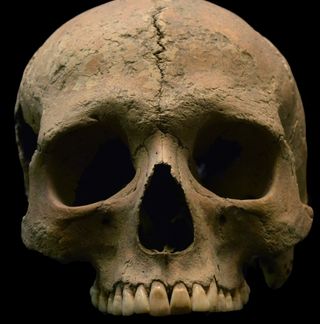2,000-Year-Old Roman Skeletons Show Signs of Malaria

Malaria afflicted the Roman Empire some 2,000 years ago, according to a new analysis of human teeth collected in Italian cemeteries.
Malaria is a serious and sometimes fatal mosquito-borne disease caused by parasites. In 2015, an estimated 214 million cases of malaria occurred worldwide, leading to 438,000 deaths, mostly children, according to the Centers of Disease Control and Prevention (CDC).
Previous research suggested that malaria was a major disease that afflicted Italy during the Roman Empire. "Its presence during this time is indirectly supported by extensive writings from ancient authors, such as Celsus and Galen, as well as ancient human skeletal remains," said lead study author Stephanie Marciniak, a biological anthropologist at Pennsylvania State University.
However, it was uncertain which species of parasite caused malaria during the Roman Empire. Currently, Plasmodium falciparum is responsible for the largest number of malaria-related deaths globally, but different species of Plasmodium can cause other, usually milder forms of malaria. [27 Devastating Infectious Diseases]
"Knowing the specific species helps frame interpretations about the diversity of the experience of disease in the past," Marciniak told Live Science. "Being able to have a window to ancient microbes can also help to understand how a particular causative agent may have evolved or changed over time."
To learn more about ancient malaria, Marciniak and her colleagues examined human teeth from the bodies of 58 adults and 10 children that date back to the Imperial period of the first to third centuries A.D. These remains came from three cemeteries in southern Italy — the sites of Isola Sacra and Velia were known as important port cities and trading centers, while Vagnari was located farther inland and is thought to be the burial site of laborers who would have worked on a rural Roman estate, the researchers said.
"In order to explore a complex disease like malaria, having a range of sites is beneficial, since malaria could technically flourish in any of these locations," Marciniak said.
Sign up for the Live Science daily newsletter now
Get the world’s most fascinating discoveries delivered straight to your inbox.
The scientists analyzed DNA fragments from dental pulp taken from the teeth. "The only way to identify the specific species of malaria is to use molecular techniques," Marciniak said.
Usable malaria parasite DNA was challenging to extract because the microbes primarily dwell within the bloodstream and organs, including the spleen and liver, which decompose and break down over time — in this case, over the course of two millennia. Still, the researchers were able to pin down the presence of Plasmodium falciparum in the remains of two adults — one from Velia, the other from Vagnari.
These findings revealed that malaria afflicted Imperial-era Italy both on the coasts and inland. "Malaria was likely a significant historical pathogen that caused widespread death in ancient Rome," study senior author Hendrik Poinar, a paleogeneticist and director of McMaster University's Ancient DNA Center in Hamilton, Canada, said in a statement.
Marciniak cautioned that while they know that this parasite was present in ancient Rome, they do not know if the disease killed the people it was found in. "Finding Plasmodium falciparum malaria in the two adult skeletons cannot be extrapolated to interpretations about widespread death or catastrophe caused by this parasite in Imperial-period Italy," she said.
Future research can explore other sites and time periods "in order to explore the scope of the parasite," Marciniak said. Future discoveries of ancient malaria DNA could help them see how the disease might have evolved over time, she said.
The scientists detailed their findings online yesterday (Dec. 5) in the journal Current Biology.
Original article on Live Science.

Most Popular






